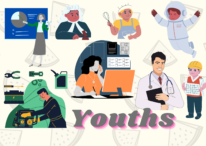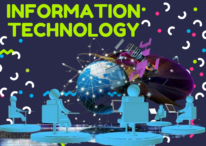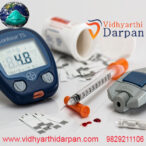 DIFFERENCE BETWEEN COUNSELLING AND GUIDANCE
DIFFERENCE BETWEEN COUNSELLING AND GUIDANCE
BY: HARSHA SINHA, VIDHYARTHI DARPAN
Counselling and guidance are two most important sections of our life, each one us need both these things at some point of our lives .Often people treat both these as the same ,but technically these both have a lot of difference.
Guidance basically tends to listen to the problem of others and then a ready-made commonly used solution is been provided without any detailed analysis of the problem, whereas counselling focuses at discussing and understanding the roots of the situation and then advising ,motivating and empowering is done with the later so that he/she could find solution to their situation.
What is the definition of Guidance and Counselling?
 Definition of Guidance
Definition of Guidance
Guidance in literal meanings is a kind of advice ,which is given to others .mostly students or children. These advices are given to them in order to let them understand their responsibilities or to make them understand the importance of their goals and ambitions, which are generally given by the elders or the teachers. This process basically focuses on making students or anyone aware of the wrongness and rightness which could happen to them by their choices or decisions, which could be a building block for their future .A proper guidance if taken seriously could make a brightest future or sometimes a poor guidance could ruin the entire life. As guidance is based on the experience of the elders ,not on any proved data hence it could lead to either ways but for most of the time the outputs are positive, it helps the youngsters to choose the best path or career for themselves .
 Definition of Counseling
Definition of Counseling
Counselling in a broader and deeper sense is a kind of therapy, In which the individual (sometimes patients or clients) openly discuss their problem share their emotions and feelings with the counselor , in order to get the proper assistance to help themselves. Generally the problem or issues are psychological that causes emotional pain or mental instability that makes them feel exhausted or restless.. hence an expert is needed to help them get a proper solution or advice. The counselor listens to the problem with full empathy and help them get rid of there issues in an confidential environment without leaking a single information. Counselor not just give the advice or any kind of therapy they helps them to under the roots of their problem so that they could never face the same issues in future again, they help them overcome their fears and depression .They also help the client to remain intuitive and positive in the future.
 Basic Differences Between Guidance and Counseling
Basic Differences Between Guidance and Counseling
The key differences between guidance and counseling are given in the following points:
1. Guidance is the advice or relevant piece of teaching generally given by the seniors or elders to solve a problem or to overcome a situation. Whereas counseling is an professional advice given by a trained and skilled guide known as a counselor to help the individual overcome from their physiological issues. A counselor could be younger than the patient as well.
2. Since guidance is given from the known ones hence it is preventive in nature while counseling tends to solve the problem professionally ,in this the patient may get furies sometimes.
3. Guidance helps the person to find a better alternative or change their track to overcome from the current situation like escaping from it. But counseling makes you fight with your issues and to get a permanent solution for your issues.
4. Guidance is a kind of comprehensive process, it has a casual approach for the problems ,while in counseling the process is inward a complete deep analysis is done for your problem and a permanent solution is given .
5. In general guidance is provided for situations like career choice or education, whereas counselling deals with every social or physiological issue you are going through.
6. As mentioned earlier a guidance could have either results positive or negative as it is given by any known elder or relative while a counseling would always lead towards a positive ending as the counselors are highly skilled professionals they are taught about all the psychological ways of healing the patients.
7. Since guidance is done by the known ones hence the privacy is less almost everyone who knows you gets to know about your situation which may lead in increment of the problem Whereas the counseling is done in a confidential
environment the counselor is not allowed to share your problems with anyone until your permission.
8. Generally in guidance the final and ultimate decision is taken by the guide or the elder unlike in the counselling you’re made capable to take your ultimate call for your situation ,your decision is the final in this case.
 Conclusion
Conclusion
By all these points we can easily figure it out that counseling and guidance are two very different processes. One more mistake which people also make often that counseling is done only with mentally unstable people ,but this isn’t true. Anyone who is going through a tough time can do counseling to strengthen themselves mentally and emotionally.







